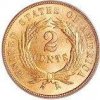If you follow the link to the McCoy calculator, you will see that also asks for the ogive length and meplat diameter, boat tail length and end diameter and so on.
It calculates center of gravity and a host of specific parameters that the Miller Formula assumes as a general constant.
For example, how would the Miller Formula know the difference between two bullets of equal length and weight but one has a secant ogive and the other has a tangent ogive?
NPS Home
You could also use this one, it is also based on the McCoy method.
JBM - Calculations - Drag/Twist

